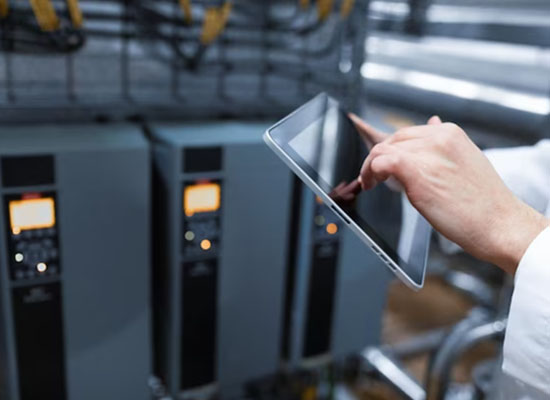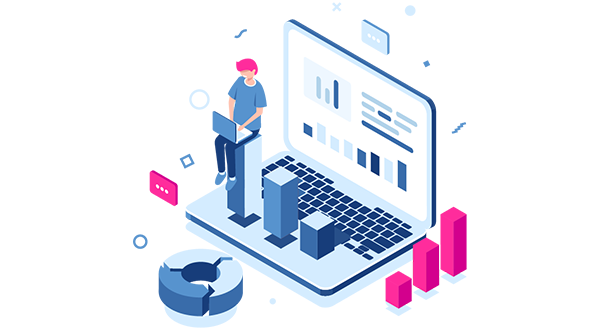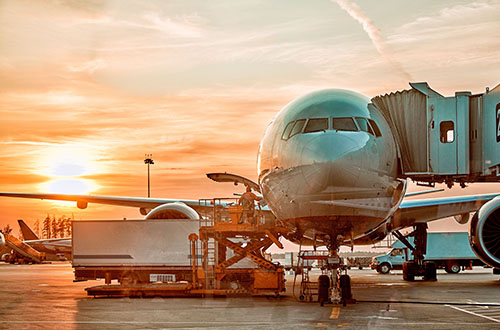

mLogica Thought Leaders: Mainframe Modernization: Today’s Choices Determine Tomorrow’s Gains—or Loss

Peter Burney, mLogica Senior V.P. of Strategic Programs
Over the past few years, mainframe modernization has rapidly accelerated. Why the urgency? While mainframes have long been the bedrock of corporate IT, they effectively block critical technological innovations businesses and public sector organizations need to survive and thrive in today’s continuously evolving landscape.
Increasingly, mainframe-dependent companies face serious roadblocks posed by aging systems, resources and legacy applications, with many embarking on digital transformation initiatives, including migrations to modern platforms expressly designed to easily integrate with the newest technologies.
A 2022 survey by Deloitte bears this out: more than 90% of mainframe-dependent businesses say they are “increasingly looking to link them to emerging technologies.” Frustratingly, over 60% believe integrating legacy tools with new applications poses serious challenges, while 57% say the lack of agility posed by legacy systems creates significant business hurdles.
Adding to the battle, with the aging of mainframe resources, finding qualified talent to support these legacy technologies is a growing challenge. A whopping 90% of Deloitte respondents say it’s moderately to extremely difficult to acquire talent just to maintain their mainframe systems, much less adapt them to today’s business needs. Meanwhile, the new generation of technical resources are simply not being trained in legacy mainframe technologies.
Fortunately, mainframe modernization technology is providing organizations a critical lifeline to sustain and grow at a time when many are still trying, and sometimes failing, to bounce back from the operational and financial impacts of our post-pandemic world. The option to modernize and even migrate to the cloud gives them a cost-effective, strategic way to expand, integrate modern systems and enhance their technological capabilities.
By connecting to the right mix of technologies, organizations can not only quickly level up to the competition, but adapt to changing conditions and scale up and down in response to fluctuating demand. In addition, modernization and digital transformation liberates enterprises from their monolithic mainframe environments, enabling virtually unlimited innovation.
Why the Need for Mainframe Modernization is Becoming Undeniable
The pandemic dramatically exposed the limitations of mainframe systems and demonstrated the vital role of legacy modernization in today’s business environment. By enhancing speed, interoperability and scalability, legacy modernization is an accelerator of business growth.
COVID-19 significantly decelerated business activity worldwide. The resulting global economic slump of the past few years ramped up financial pressures on enterprises large and small. Yet while some businesses sank, others not only survived, but flourished. The key differentiating factor, and predictor of resilience and even growth? Technology that enabled these winners to pivot and adapt on demand.
How Modernization Drives Growth
With their monolithic architecture, mainframes present prohibitive hurdles to the incorporation of key new technologies. But modernizing untethers an organization from that closed environment, freely allowing integration with advanced tools such as artificial intelligence, machine learning, data analytics, IoT and more. In addition, mainframe migration to the cloud allows organizations to connect to virtually unlimited cloud-native functionalities that let them optimally manage workloads and accelerate service delivery while slashing IT licensing and maintenance costs.
A report by industry experts McKinsey outlines how the automation, dynamic scalability and technology standardization of cloud computing, among other key functionalities, benefit organizations by:
- Slashing IT costs 30 - 40%
- Allowing on-demand scalability that lets organizations precisely tailor IT asset consumption
- Offering efficient solutions like AI, machine learning and big data capabilities to streamline daily business tasks
- “Self-healing” cloud capabilities that automatically perform critical maintenance and security tasks, reducing business-damaging IT incidents by an estimated 70%.
The line between mainframe-based and cloud-based organizations is getting thinner and thinner with each passing year, and we’ll eventually see that line disappear as more and more organizations face the inevitable need for digital transformation.
Modernizing the Right Way
So now that we’ve clarified the why of mainframe modernization, the next critical question is how? As we’ve discussed previously, one reason companies hesitate to modernize, despite overwhelming incentives, is worry about potential disruption, delays and cost overruns, not to mention concerns over whether applications will in fact work as needed on their new platform.
Another stumbling block is fear over the business impact of the transition itself, specifically the costs associated with hands-on recoding by internal or external resources that can take months or even years. By contrast, an automated migration tool optimizes this code translation process, virtually eliminating human error during repetitive, large-scale coding tasks, and focusing costly staff resources on troubleshooting and isolated defect remediation.
Taking a Strategic Approach
Choosing the right modernization methodology is critical for seamless migration of mainframe applications and data to your target platform. Successful legacy modernizations leverage a phased approach, supported by expert planning and the active involvement of stakeholders, to avoid any disruption of daily business functions.
Well Begun Really is Half Done
A successful modernization strategy aims to enhance system performance, enable agility and scalability, and cut costs while ensuring core functionalities and business data remain intact. However, since no two data centers are alike, a “one size fits all” approach is doomed to fail.
That’s why before any organization embarks on a mainframe modernization, it’s critical to comprehensively assess the existing system. This enables the transition team to develop a precise roadmap, ensuring all business and technical goals are met throughout the process.
Ideally, such an analysis would include:
- Assessment of all systems and sub-systems in the data center
- Audit of all applications to determine the role each plays in business activities
- Survey of each application’s dependencies on other applications, databases, IT infrastructure and services
- Determining which applications are candidates for replatforming vs. refactoring vs. rearchitecting; which applications are cloud-ready, the optimal cloud options, and which applications need to be redeveloped, replaced or retired
THE BOTTOM LINE? THE BOTTOM LINE!
Ultimately, money invested on mainframe modernization today is revenue gained for the future—not just in short-term return on investment, but in reduction of technical debt and—crucially—the ability to compete and beat increasingly agile competitors.
For more information on how you can modernize your distributed and mainframe workloads to the cloud in one-third the time and at half the cost of traditional migrations, contact us at Modernize-Now@mLogica.com.








































